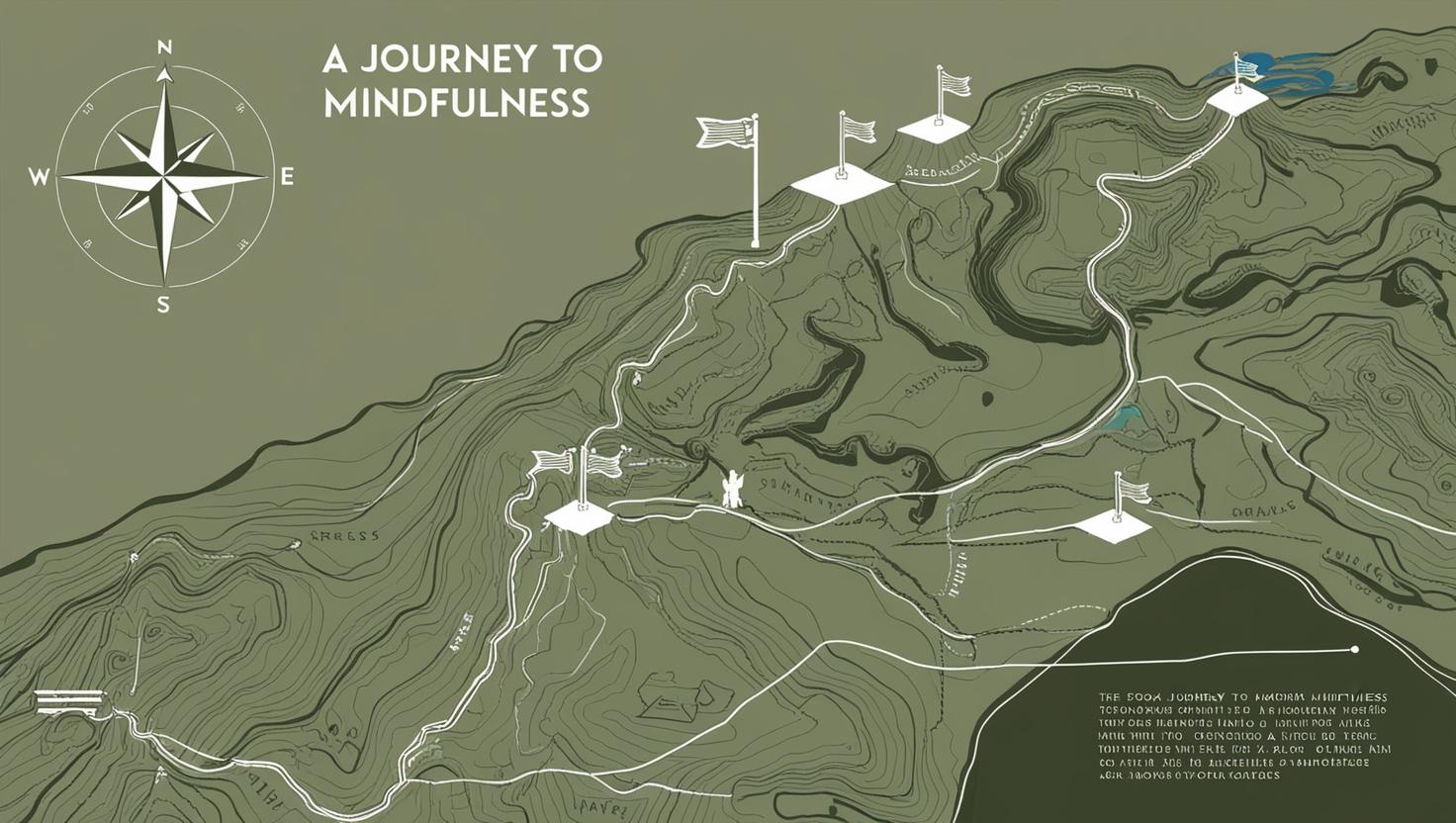
The Power of Meditation: How It's Helped Me Manage My Lived Experience
The first time I tried meditation, I was sitting in my living room, surrounded by the ghosts of military precision. My watch was set exactly, my posture parade-ground perfect. I was determined to "succeed" at finding peace - as if meditation was another mission to complete. It took months to realize this military mindset was exactly what I needed to unlearn.
As a veteran grappling with PTSD and moral injury, the idea of sitting quietly with my thoughts felt not just challenging, but dangerous. How could stillness help when my training demanded constant vigilance? Yet it was precisely this tension between military conditioning and meditative peace that would become the cornerstone of my healing.
Now, before you picture me perched atop a mountain, draped in robes, chanting "Om"—let me set the record straight. My introduction to meditation was more like me sitting awkwardly in my living room, desperately trying to stay still without reaching for my phone. Spoiler alert: I initially failed spectacularly.
But here's the beautiful secret about meditation—it's less about perfection and more about consistently showing up. For someone like me, whose mind often felt like an internet browser overloaded with open tabs, the simplicity of just breathing was revolutionary.
The Turning Point
In 2015, my turning point came during a particularly challenging PTSD episode. My military training had taught me to maintain situational awareness at all costs - a hypervigilance that was now working against me. That's when my therapist introduced me to mindfulness meditation, but with a crucial twist: we approached it like a tactical operation.
Instead of fighting against my military instincts, we used them. That constant awareness? We redirected it inward. Those precise breathing techniques from weapons training? They became the foundation of my meditation practice. Suddenly, mindfulness wasn't some foreign concept - it was a mission-critical skill.
The Challenge of Self-Compassion
The real challenge came with loving-kindness meditation. As someone trained to view vulnerability as a tactical weakness, sending goodwill to myself felt like a security breach. "The enemy could exploit this," my military mind would whisper. But gradually, I began to understand: moral injury requires this kind of radical self-compassion. It's not about lowering defenses - it's about recalibrating them.
The Science of Healing
The science behind meditation's effectiveness fascinates both the analyst and the knitter in me - the part that once calculated crypto changeovers now finds peace in the rhythm of meditation, much like the meditative flow of creating complex knitting patterns. Just as each stitch builds upon the last to create something beautiful, each meditation session weaves new patterns of healing.
Since leaving the RAAF in 2000, I've drawn inspiration from both modern research and ancient wisdom. The Stoics taught that true strength comes from inner discipline - something that resonates deeply with my military background. Modern military studies confirm what Marcus Aurelius knew centuries ago: mindfulness practices significantly reduce PTSD symptoms in veterans.
A Message to Fellow Veterans
To my fellow veterans: I know meditation might sound like the opposite of everything we were taught. But consider this - we learned to maintain our weapons, run drills, and stay combat-ready. Think of meditation as maintaining your most crucial weapon system: your mind. Start with one minute. Use your training - set a time, create a routine, establish your position. Every "failed" session is actually a successful rep in training your mind to find its way back to base.
💡 Pro Tip:
Start small and be consistent. Even just 5 minutes of meditation each day can have significant benefits for your mental well-being.
Join Our Community
Ready to explore this road less traveled? As someone who's navigated both the structured world of military service and the creative realm of fiber arts, I've created The Warrior's Guide to Mindfulness - a tactical manual that translates meditation into military language, complete with mission briefings, standard operating procedures, and practical drills for mental resilience.
- Download the "The Warrior's Guide to Mindfulness" below - a comprehensive seven-part tactical manual including:
- Mission Brief: Understanding the Battlefield of the Mind
- Pre-Mission Prep: Setting Up Your Meditation Space
- Basic Training: Foundational Breathing Techniques
- Advanced Operations: Specific Meditation Practices for PTSD
- Field Manual: Daily Drills and Routines
- Battle Buddy System: Group Practice Guidelines
- After Action Review: Tracking Your Progress
- Explore more articles about healing through creativity and technology
💡 Printing Instructions:
This guide is formatted for A5 booklet printing. To print as a booklet:
- Open the PDF in Adobe Acrobat Reader
- Go to File > Print
- Under "Page Sizing & Handling", select "Booklet"
- Set the paper size to A5
- Select "Both sides" for printing
- Click "Print" and follow your printer's instructions for double-sided printing
Together, we'll build a digital garden of peace and purpose.
References
Khusid, M. A., & Vythilingam, M. (2016). The emerging role of mindfulness meditation as effective self-management strategy, part 1: Clinical implications for depression, post-traumatic stress disorder, and anxiety. Military Medicine, 181(9), 961-968.
Galante, J., Galante, I., Bekkers, M. J., & Gallacher, J. (2014). Effect of kindness-based meditation on health and well-being: A systematic review and meta-analysis. Journal of Consulting and Clinical Psychology, 82(6), 1101-1114.
Goyal, M., Singh, S., Sibinga, E. M., et al. (2014). Meditation programs for psychological stress and well-being: A systematic review and meta-analysis. JAMA Internal Medicine, 174(3), 357-368.